Royal Ontario Museum Blog
Monthly Archive: December
Pacifist Males & Warrior Females

About a hundred year ago, mass produced colour lithographs proliferated across the South Asian subcontinent creating new imaginary communities through a shared visual imagery. In this new kind of visual culture, hero images seemed to flip traditional gender roles by being dominated by warrior females and pacifist males. Written by Deepali Dewan
Staying in Style: Books on Fashion
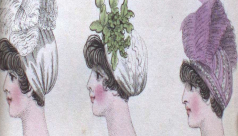
October saw another Fashion Week in Toronto come and go - one of many events that mark the seasons of the fashion calendar.
Unfrozen in Time: From the Erebus and Terror to the ROM
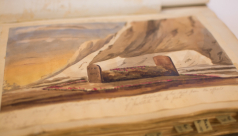
Today’s blog post is a glimpse of a tale that is largely untold. It is the story of the exploration of the Canadian Arctic, as seen by Adam White in his botanical scrapbooks. These scrapbooks were donated to the University of Toronto, and came to the ROM together with what is now the ROM’s Green Plant Herbarium. What do these scrapbooks have to do with Franklin, the HMS Erebus and the HMS Terror? It’s a fantastic story!
Weapon Wednesday: Bagh Nakh--making humans into tigers

The blades, like the tiger claws they are named for, are made to slash though an opponent and, in modern history, is most often associated with the Hindu Marati warrior Shivaji. Written by Aruna Panday
Franklin Found! Clues in an Arctic Mystery
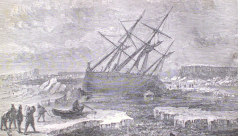
The recent discovery of one of the Franklin expedition’s lost ships has provided new evidence in a mysterious chapter in early Arctic exploration.

What exactly is a LOT?

In the past 100 years, the Ichthyology section at the ROM has amassed over one million fish specimens from around the world in one of the largest fish collections in North America. These specimens are preserved, sorted into LOTS, identified, catalogued and shelved like books in a library.
Are you Afraid FOR Bats This Halloween?
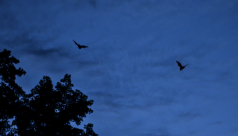
I love bats. There’s just something about them that gives me that warm fuzzy feeling inside everytime I see one. Now I know what you (and to be honest, a lot of people I know) are thinking - how can she like such a creepy little mammal like a bat? Don’t they suck your blood/get caught in your hair/give you the heebie jeebies? First of all, the answer to those questions is no.
Blue Whale Update: Where is it Now?
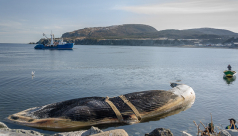
Guest Blog Posting by Environmental Visual Communication (EVC) student, Nila Sivatheesan
The "Maple Leaf Forever Tree" Lives On
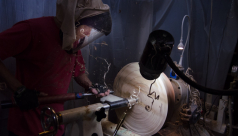
A year after a storm toppled the famous "Maple Leaf Forever Tree" in Leslieville, Toronto-based artisan and Eco-woodturner Michael Finkelstein wanted to help preserve this beautiful, 150-year old silver maple tree for future generations to enjoy through his artwork.
Walking a half-Marathon as the Herculaneum soldier
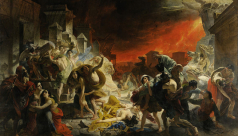
Probably on October 24th in 79 AD a large group of people congregated on the beach at the seaside town of Herculaneum, in Italy. They were presumably trying to take ship to gain distance from Mount Vesuvius, which had been raining ash and rocks on the city, and the neighbouring town of Pompeii, all day. But suddenly, a massive cloud of red-hot ash swept down from the volcano directly towards Herculaneum. Studies of the skeletons on the beach show that they were mostly males, with women and children huddling in boathouses by the shore. One man in particular was a soldier.
